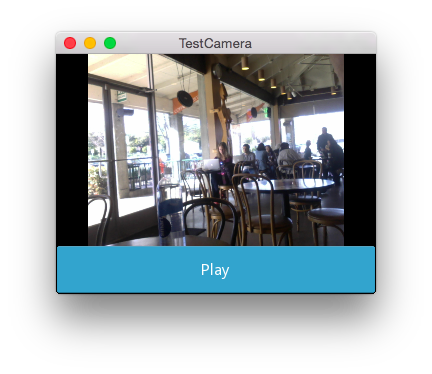Table Of Contents
Camera Example¶
This example demonstrates a simple use of the camera. It shows a window with a buttoned labelled ‘play’ to turn the camera on and off. Note that not finding a camera, perhaps because gstreamer is not installed, will throw an exception during the kv language processing.
File camera/main.py¶
'''
Camera Example
==============
This example demonstrates a simple use of the camera. It shows a window with
a buttoned labelled 'play' to turn the camera on and off. Note that
not finding a camera, perhaps because gstreamer is not installed, will
throw an exception during the kv language processing.
'''
# Uncomment these lines to see all the messages
# from kivy.logger import Logger
# import logging
# Logger.setLevel(logging.TRACE)
from kivy.app import App
from kivy.lang import Builder
from kivy.uix.boxlayout import BoxLayout
import time
Builder.load_string('''
<CameraClick>:
orientation: 'vertical'
Camera:
id: camera
resolution: (640, 480)
play: False
ToggleButton:
text: 'Play'
on_press: camera.play = not camera.play
size_hint_y: None
height: '48dp'
Button:
text: 'Capture'
size_hint_y: None
height: '48dp'
on_press: root.capture()
''')
class CameraClick(BoxLayout):
def capture(self):
'''
Function to capture the images and give them the names
according to their captured time and date.
'''
camera = self.ids['camera']
timestr = time.strftime("%Y%m%d_%H%M%S")
camera.export_to_png("IMG_{}.png".format(timestr))
print("Captured")
class TestCamera(App):
def build(self):
return CameraClick()
TestCamera().run()

